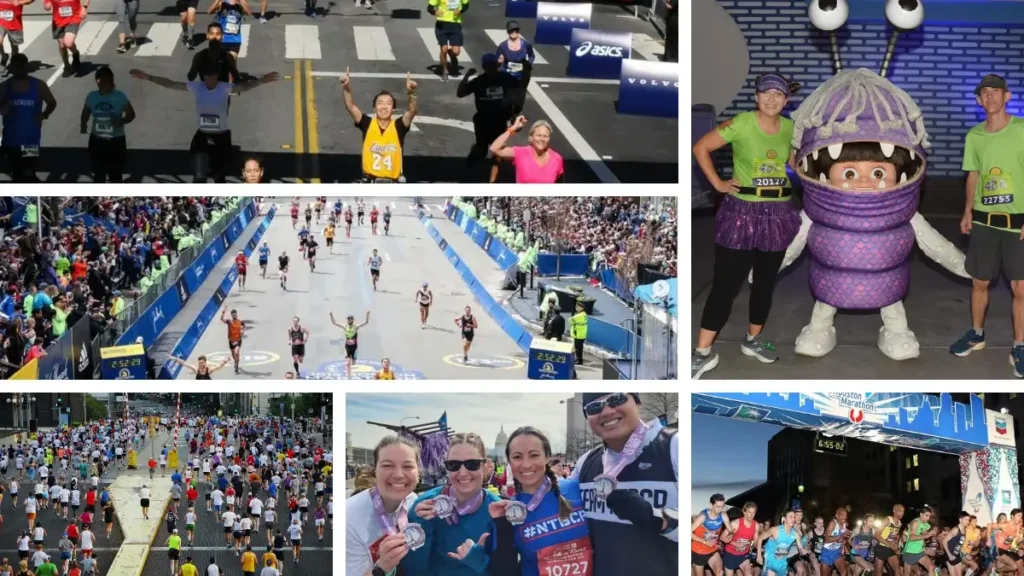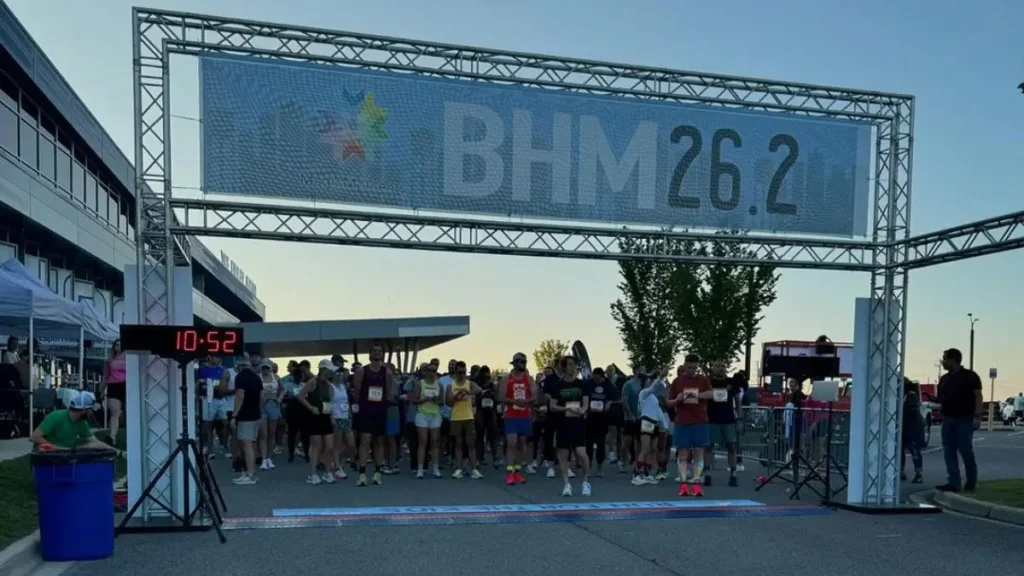The best marathons in Wisconsin are:
Wisconsin might not always come up first when runners talk about iconic marathons, but the variety here is real.
You get the charm of smaller communities, the buzz of big cities, and scenery that shifts between rivers, lakes, and tree-lined paths.
If you’re looking to run a marathon in the Badger State, these four courses give you very different ways to cover 26.2 miles.
Check out my Top 50 Best Marathons in the US, or choose another state:
Eau Claire Marathon
Eau Claire | May 3, 2026
Course Type: Rolling Hills
Elevation Gain: 590 feet (179m)
Participants: 633 Finishers (2025)
Price: $85
The Eau Claire Marathon starts in downtown at Phoenix Park and winds through a mix of riverside trails, bridges, neighborhoods, and campus streets. Over the 26.2 miles you’ll cross eight different bridges, which keeps the scenery changing and gives the course a distinctive rhythm.
Elevation-wise, it’s not flat but it’s not punishing either. Runners cover about 590 feet of total climbing, though the net gain is basically nothing from start to finish. That means gentle rolling hills throughout, enough to keep your legs engaged without ever turning into a grind.
The second half of the race is where the energy picks up. Around the University of Wisconsin–Eau Claire you’ll pass through the Blugold Mile, a stretch packed with students and spectators who give a big boost. Later, around mile 23 and a half, the Barstow Block Party delivers another burst of cheering, music, and noise just when you need it most.
Spectators cluster in a few key areas such as the opening miles downtown, stretches along Barstow Street, and the finish line on Graham Avenue. Water, sports drink, and gels are set up throughout the route, and the race is certified as a Boston Qualifier.
Milwaukee Lakefront Marathon
Milwaukee | Oct 5, 2025
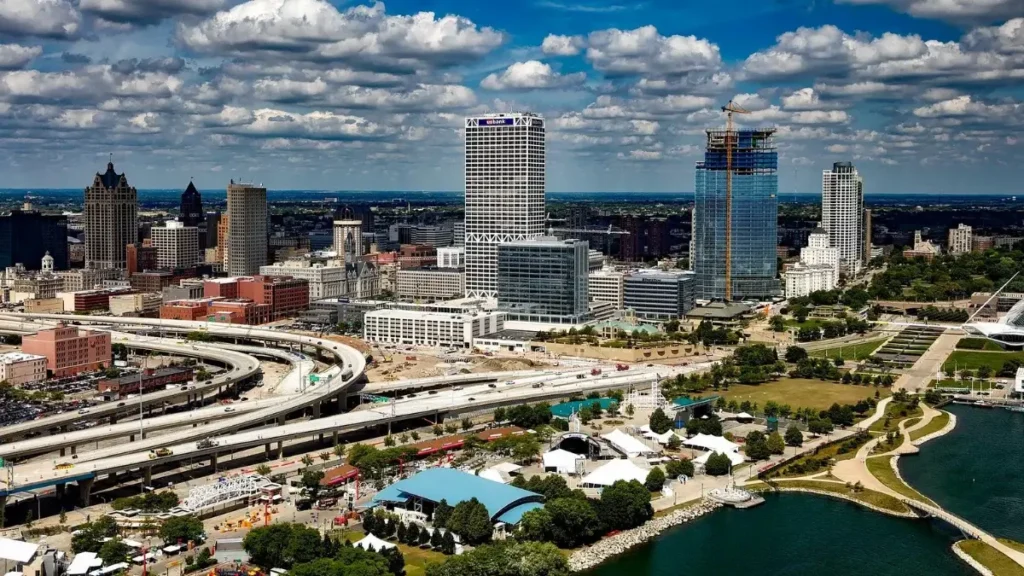

Course Type: Rolling Hills
Elevation Gain: 752 feet (229m)
Participants: 1,586 Finishers (2024)
Price: $120
The Milwaukee Lakefront Marathon starts downtown at 7 in the morning, with full and half marathon runners heading out together. The opening miles weave through city streets lined with restaurants, shops, and Milwaukee’s older architecture before turning toward Lake Michigan and the Hoan Bridge. That transition from the buzz of downtown to the open lake views sets the tone for the rest of the course.
The Hoan Bridge is the defining feature. You climb it around mile seven and again near mile twenty-three. The grade is enough to test your legs, but the payoff comes with wide views of the water and skyline. It is a stretch runners remember long after the finish.
From there the route settles into a mix of bike paths, lakeside parks, and stretches of open road that keep you close to the shoreline. The course is mostly flat with around six hundred feet of total climbing, made up of rolling rises rather than anything steep.
Aid stations are spaced every couple of miles with water, sports drink, and gels available at key points. Pacing groups are out on the course, and the event is USATF certified, making it a Boston Qualifier.
Spectator support tends to gather in specific spots, especially downtown at the start, along the bridge crossings, and in the lakeside parks as runners close in on the finish. The race wraps up at Henry Maier Festival Park with plenty of space for post-race celebrating.
Madison Marathon
Madison | Nov 9, 2025
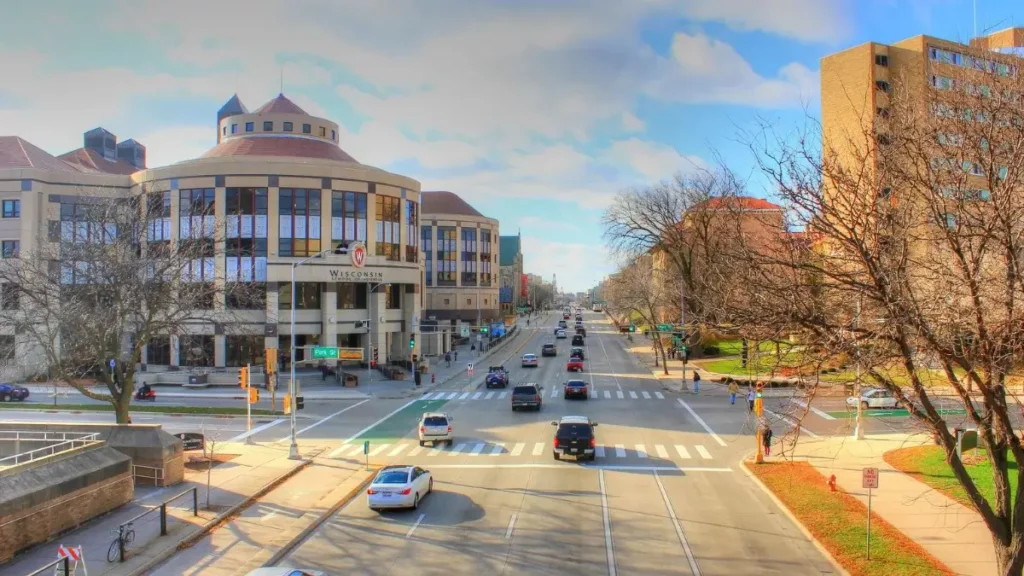

Course Type: Rolling Hills
Elevation Gain: 851 feet (259m)
Participants: 1,845 Finishers (2024)
Price: $197
What makes the Madison Marathon stand out is its start and finish on Capitol Square. The Wisconsin State Capitol rises over the race like a backdrop, and the city streets spill out from that hub. Crossing the finish line in the same spot adds a satisfying symmetry to the day.
The course itself is built around Madison’s lakes and green spaces. You’ll circle Lake Monona, catch stretches along Lake Mendota, and pass through Olbrich Park. The University of Wisconsin Arboretum offers a quieter stretch, shaded and lined with trees, which contrasts nicely with the city streets and downtown sections.
Hills are part of the story here. Madison isn’t mountainous, but the terrain never settles into full flatness. There are small climbs near the lakes and rolling hills scattered across neighborhoods. They don’t overwhelm, but they add up, especially late in the race.
The timing of the marathon adds its own flavor. Run in November, the weather can be crisp and unpredictable. Some years it’s cool and perfect for distance running, other years the wind coming off the lakes forces you to dig deeper. Fall foliage is often still hanging on, giving the parks and tree-lined sections extra color.
Crowd support concentrates downtown and at the finish, but throughout the course you’ll also see plenty of locals stepping outside to cheer. Volunteers at road crossings and in the arboretum keep things moving smoothly. Parking and logistics are straightforward thanks to downtown’s central layout.
Brew City Marathon
Milwaukee | Apr 18, 2026
Course Type: Mostly Flat
Elevation Gain: 337 feet (102m)
Participants: 236 Finishers (2025)
Price: $115
The day usually begins in mid-April, when Milwaukee is just waking up from winter and the parks are still shaking off cold nights. The Marathon, Half, 10K & 5K all happen on the same event day so there’s a layered energy of serious times and casual runners mixing.
The route leans heavily on Milwaukee’s paved trail network. Most of the course follows the Oak Leaf Trail system, which is over 130 miles of multi-use trail through Milwaukee County Parks. That means long stretches where you’re away from heavy traffic, surrounded by trees, river views, and green patches. The trail goes through Riverside Park, passes near the Milwaukee River, and has sections where the trail hugs the riverbank.
Much of the course is quite flat or gently rolling. There is a slight uphill heading out toward the turnaround, followed by a more forgiving downhill return. The elevation changes aren’t dramatic, so it should feel manageable pace-wise.
Early on, there are Aid stations about every 1.5 miles, then roughly every 2 miles afterward. They offer water, sports drinks, and volunteers do a good job calling out what’s available. The cups tend to get messy if there isn’t a bin just after the station, so don’t trip on them.
The expo is modest; day-of bib pick up is allowed, though not encouraged. Parking close to the start area is possible, though popular lots fill up, so earlier arrival helps. There are alternative lots and shuttle info provided.
The finishers’ medal recently had a design shaped like Wisconsin, with elements like the Milwaukee Art Museum roof, a beer & bratwurst motif for local flavor. After you cross the line, expect beer from a local brewery (for runners over 21), and sometimes live music or a band.
The weather is a wildcard. In a previous year, the starting temperature was cold (around mid-30s) with some wind, which made things really tough. Because parts of the trail run next to open water and exposed riverbanks, the wind can be harsh, especially on stretches with little tree cover.
The Running Community & Clubs in Wisconsin
Wisconsin has a lively network of running clubs and groups of all levels, not just for racing but for social runs, trail runs, and mutual encouragement. The Badgerland Striders are among the largest, offering free fun runs, track workouts, and even a marathon buildup program in Southeast Wisconsin.
In Eau Claire the Indianhead Track Club operates year-round, hosting small-distance events, run/walks and even thematic fun runs (beer & M&Ms, ugly sweater run). These kinds of local events keep motivation strong when you’re training for a big race.
Fox Cities has PaceSetters, which mixes serious distance runs with lighter social runs and food/socializing afterward. It’s a good reminder that running in Wisconsin often intertwines with community, food, trails, and conversation.
Weather, Travel & Practical Race-Weekend Tips
Weather in Wisconsin during race months can swing wildly. Early spring races might start chilly, sometimes below freezing overnight, warming up quickly. Fall races tend to bring cooler mornings and crisp air but potential wind (especially near lakes) that can surface abruptly. Locals advise layering and keeping an eye on wind forecasts.
If you’re coming in from out of town, public transport or regional buses can help in larger cities (Milwaukee, Madison). Parking near start/finish tends to fill up early so arriving well ahead can save stress. For smaller race towns, lodging options may be limited so booking early is smart.
Dirt, trail, and mixed-terrain options exist outside the big city courses. Trail runners around Chippewa Valley have groups like Chippewa Valley Trail Runners that do weekly runs on trails and put on smaller “dirt series” events. These offer good cross-training or even fun escapes from road pounding.
Conclusion
Marathoning in Wisconsin is about more than just the miles. One race brings you over rivers on a series of bridges, another lets you take in Lake Michigan from a sweeping bridge, another winds around two lakes with the State Capitol as your bookend, and another keeps things grounded with river trails and a low-key park finish.
Together they show off the variety of running the state offers, from urban to outdoorsy and everything in between. Whether you are chasing a fast time or just looking for a memorable way to run through new scenery, Wisconsin delivers a course that will stick with you.
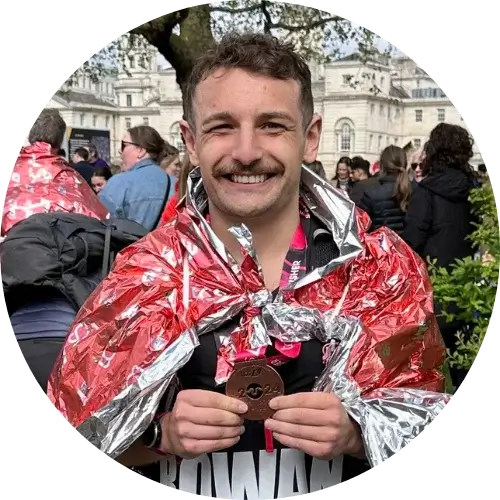
Row Brown is the founder of Refresh Row. He is a keen marathon runner, his favorite being the London Marathon. He’s now set himself the mission of Running the Entire Length of Spain, which is scheduled for late 2024.

